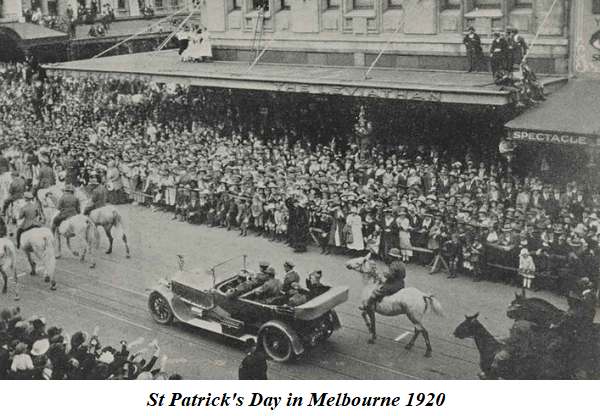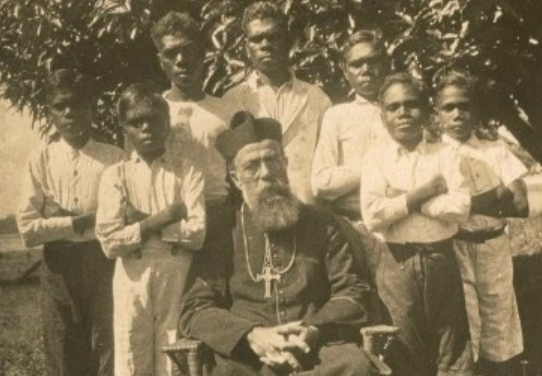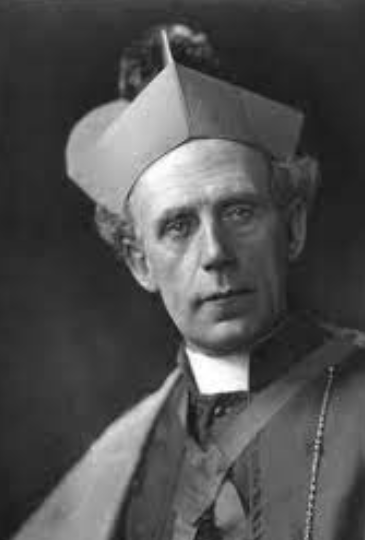
James Franklin’s latest book, Catholic Thought and Catholic Action, is a superbly engaging account of dramatic moments and characters from Australian Catholic history. It includes stories of the heroic, the good, the bad and the ugly, uniquely blending an Australian-style Canaletto canvas with a wide-visioned Namatjira landscape. With an array of fascinating historical photos, there is continual interpolation between the local stories and their wider historical contexts.
As the new arrivals first set foot on Australian soil, the French Revolution and Irish rebellions echo in the background. Franklin highlights from the outset that it was not only bodies that were transported from 1788 onwards, but also ideas of justice and dignity, which the new bedraggled Catholic convicts carried with them, however imperfectly they represented this new phase of salvation history. They “embodied a tradition of ideas and ideas-led action different from the rest of the population”, a humanism, whose theological and philosophical substrates were to profoundly affect the fate of this land socially, institutionally and legally. In the two centuries since, a vigorous church, first Irish and then multicultural, developed into a distinctive section of Australian society, comprising one fifth to one quarter of the population. According to the latest census, the detested religious faith of the rebels which Britain wanted to get rid of now represents the most numerous religious group in Australia!
This review appears in the latest Quadrant.
Click here to subscribe
After the first public mass on Australian soil was said in 1803 by Father James Dixon, a letter reached Rome about this poor Irish convict priest being sent to the ends of the earth. In a manner resonating with the biblical paradoxes of “raising the lowly”, the Vatican bestowed on Father Dixon the grand title of “Prefect Apostolic of New Holland”. A spark of inestimable significance was lit, carried on by future pioneer priests, Fathers Therry and Conolly, who arrived in 1820, the first nuns, the Sisters of Charity, who arrived in 1838, and the many who followed.
Franklin recounts episodes of early colonial history in broad brushstrokes, such as the Castle Hill rebellion of 1804  and the Rum Rebellion of 1808, when the Irish participants were described by the “flogging parson” Samuel Marsden as “dangerous members of society … their minds are depraved beyond all conception”. Those with “depraved” minds moved on to become landowners, pillars of society, and builders of schools, hospitals, orphanages and shelters on a grand scale.
and the Rum Rebellion of 1808, when the Irish participants were described by the “flogging parson” Samuel Marsden as “dangerous members of society … their minds are depraved beyond all conception”. Those with “depraved” minds moved on to become landowners, pillars of society, and builders of schools, hospitals, orphanages and shelters on a grand scale.
Particularly fascinating is the account of the missions in Australia, which contrasts with the current anti-Christian woke version of such history. Franklin makes clear the indisputable but often forgotten distinction between the colonialists and the missionaries. The missionaries differed in motivation, were unarmed, and did not impose their will on the locals. How often is this fact recognised in Australian history courses and media denunciations? Without glossing over their deficiencies, Franklin outlines (in chapters 3 and 4) how well the early missions went: New Norcia, a Benedictine Abbey with an Aboriginal ministry, Drysdale River, Lombadina (a Trappist/Pallottine mission) and Bathurst Island founded by Father Francis Xavier Gsell—among others. How many know that the biggest remote communities today are former missions, for example, Wadeye, the former Catholic mission of Port Keats?
The recent noisy view of mission oppression is inaccurate. As Franklin notes, the positive, neglected voice emerges from extant evidence, such as from the 1990s book The Garden Point Mob; from Nova Peris’s autobiography describing her mother receiving care in the missions; from a book by Betty Lockyer, of mixed Aboriginal and Malay parentage, who “was positive about her life at Beagle Bay Mission in the 1940s”; and a letter from Hilda, a girl from Drysdale mission who wrote to the Abbot at New Norcia about the nuns who cared for her after the Second World War, saying that the “sisters are here everything very nice”, detailing what she was learning from them. For those who need cultural smelling salts to remind them, it is a historical fact that children of mostly mixed race found haven in the missions, as they often faced abuse because of lack of acceptance by all, including tribal groups.
In launching Franklin’s book on April 1, Senator Jacinta Nampijinpa Price, not a Catholic, spoke positively of Franklin’s account. And Francis Xavier Kurrupuwu, the member for Arafura in the Northern Territory Parliament, far from condemning the missions, spoke positively of one of the most memorable missionaries in Australian history in his maiden speech on October 23, 2012. He referred to Father (later Bishop) Gsell (below), whose story should be engraved in the memory of every cultural amnesiac, whether Catholic or non-Catholic, and it goes like this.

Born in Alsace, Father Gsell came here as a member of the Missionaries of the Sacred Heart (the MSCs). He was appointed Apostolic Administrator of the Northern Territory and did pioneering missionary work among Aborigines and established good relations with them. In 1911 he established a mission at Nguiu on Bathurst Island and ran a peaceful settlement with children attending school, running market gardens and a sawmilling business. He forced no conversion on anyone, in fact had very few, but was a peaceful witness and great helper, perhaps best illustrated in the story often jocularly referred to as his having “150 wives”. In fact, feminists should be thrilled at this. Martina, a young Aboriginal girl who did not wish to be forced into a union with an old man, according to the custom of the elders, ran away to Father Gsell, whom she saw as a protector. The tribal elder followed her, claimed her back, and then Martina escaped from him again after having a spear stabbed into her leg “to drive a right spirit into her small body”. Note again, she saw Father Gsell as a protector. With the wisdom of Solomon, Father Gsell managed to negotiate a settlement, giving gifts to the Aboriginal elders so she could stay, hence she and the others similarly saved were called his “wives”. Martina ended up living on the mission, chose her own husband and had five children. Francis Xavier Kurrupuwu, referred to above, is Martina’s great-grandson.
Another character from a later age is the unforgettable Father Paddy Ryan (also an MSC). Of him one could use the words used about Bishop Fulton Sheen—“a golden-tongued fiery young Demosthenes who has shown his quick wit, versatility and power of mind so often on the debating platform”. Father Ryan robustly countered the flawed philosophies and ideologies of his era; Franklin quotes one of his memorable comments: “I personally have argued for hours with graduates of Sydney University in a futile endeavour to convince them of their own existence.” Father Ryan used his brilliant debating skills in arguing with communists, acutely aware of their tactics, at a time when people were often ignorant of the contradictions between what communism taught and what it actually did. His moment of glory would surely be his debate with the communist Edgar Ross at Rushcutters Bay Stadium on September 23, 1948. Despite rain, some 30,000 people turned up, the atmosphere was electric, Catholics booed the communists, and Ryan presented a barrage of facts to expose communist deceptions.
Many post-war victims of communism were arriving in Australia at that time, mainly Christians, courtesy of then Immigration Minister Arthur Calwell’s pragmatic concerns and plans to have more New Australians. Not many refugees coming off the boats, like my parents, would have known Father Ryan’s name then, but had they done  so, they would have greatly admired his accurate perceptions and myth-busting courage.
so, they would have greatly admired his accurate perceptions and myth-busting courage.
Along with many accounts of memorable Irish characters threading Australian Catholic history, such as the well-known Father Patrick Hartigan (“John O’Brien”) and Archbishop Daniel Mannix (left), Franklin outlines the extraordinary evolution of lay societies designed to create a complete Catholic culture covering most aspects of life in the late nineteenth and twentieth centuries. There was Archbishop Bede Polding’s founding of the Australasian Holy Catholic Guild in 1845—a friendly society which provided sick pay, medical and pharmaceutical and funeral benefits to Catholics. Then there was the Catholic Women’s Social Guild; the Catholic Scouts Movement in 1930s; the Taxi Drivers’ Guild of St Christopher and St Anthony; the Postmaster-General’s Mission Guild; the Catholic Insurance Guild of St Anthony; the Catholic Bankers Guild of St Matthew; the Qualified Accountants and Secretaries’ Catholic Guild of St Vincent de Paul; the Journalists’ Guild of St Francis de Sales; the Catholic Radio Guild of St John Chrysostom; and the Assisian Guild of Catholic Teachers in state schools. Add to that the St Thomas More Society for lawyers and the Catholic Bushwalking Club, which still exist.
As a child of East European Catholic refugees, my school years were filled with Irish stories, saints and songs, my memories of being in the Holy Angels’ Society being especially poignant here. In the post-Soviet era, when visiting Latvia, I met my cousin, who had been raised there in the communist era. I told her of my Irish-tinged Catholic education in Australia, in particular my Holy Angels “red cloak”, and she told me of her communist red scarf which she was obligated to wear in youth marches. What starkly different worlds we came from! This former Communist Youth pioneer, however, now no longer wears a red scarf and she goes to church.
Other memorable scenes that jump out from the book include the founding of the Aquinas Academy in Sydney in 1945 by Marist priest Dr Austin Woodbury, whose evening school at one stage ran nineteen classes a week. Such a philosophical stronghold punched above its weight for many decades, with secretaries, students and scholars taking courses, and who can tell how far its influence really reached? It was part of the mid-century high point of Catholicism which included Father “Doc” Leslie Rumble’s radio shows, B.A. Santamaria’s anti-communist Movement, originating in Victoria, and the fact that in 1954, the New South Wales Premier and Police Commissioner and the Sydney Lord Mayor were all Catholic. This was the year, as Franklin points out, that the New South Wales Departments of Public Works, Attorney-General, Justice, Police, and the Housing Commission, had Catholics both as their respective ministers and permanent heads.
As Franklin explains, this was an era in which immoral behaviour was often luridly denounced. This was part of a wider conservatism common to most Western countries, even in Anglophone countries without any special Catholic influence, such as the United Kingdom, America, New Zealand and Australia. And in this context, the media expressed impassioned outrage at matters which would go unnoticed nowadays. Many children of unmarried women were institutionalised, and the Magdalen laundries took in girls no one else wanted. Without excusing any failure of care here, Franklin points out that part can be attributed to psychological factors (in secular and religious settings) such as the emotional deprivation and poor training of those in charge, the nuns often sharing the harsh conditions of the institutionalised children. Psychology had a long way to go in understanding human attachment and loss, and in improving training, not to mention the notorious therapy interventions given to paedophiles which was supposed to rehabilitate them, based on an unfounded trust. Things are very different now and trust in “experts”, psychological, medical and legal, is questioned more deeply.
One of the profound long-term effects of transportation was doubtless the Catholic understanding of social justice—derived from the notion of the irreducible worth of persons. This percolated throughout Australian society from convict days, evolving into philosophy/theology courses, welfare groups, and influencing Australian legal understanding in the Mabo decision. The anti-metaphysical tenor of the Australian legal system was represented by Sir Owen Dixon, who insisted on the fundamental importance of precedent, rather than the “merely metaphysical”. This was challenged by Sir Gerard Brennan, the writer of the first Mabo judgment. There were absolute values, stemming from natural law, as Brennan explained, and his view that “moral values can and manifestly do inform the law”, particularly those laws pertaining to the dignity of the human person, prevailed.
In The Western Dreaming (2001) John Carroll says the Western world is in the process of forgetting its major stories. He says “the spirit cannot breathe without a story” and “Western culture runs on stories starting with Homer’s mythic recounting of a few episodes from the tenth year of the Trojan War”. Franklin’s new book breathes such spirit into past scenes, with lively accounts of parish-based organisations, sodalities and guilds whose uniformity of beliefs and co-ordinated action in support of those beliefs gave Catholics a deeply felt sense of belonging. Recently, I was telling Father Ryan’s story to a Sydney priest of Vietnamese background, who had never heard of Ryan but was fascinated. So, I will promptly give him this new book and strongly encourage others, as well as buying it for themselves, to do likewise for our priests “from overseas”, and anyone else interested, as a bridge to communal Australian Catholic memories.
Here are true, balanced, historical accounts of mission history, pioneering characters, Irish and from many other lands, elegantly interlaced with witty and piquant detail. These could be formed into short courses of biographical history at primary, secondary and tertiary levels to counter the current cultural amnesia. What extraordinary characters, what stories, and broad Catholic vision Franklin brings to life—from bedraggled convict priest to those influencing the High Court of Australia! This book recounts some of the greatest stories of our land—stories which remain a source of reality and hope.
Catholic Thought and Catholic Action: Scenes from Australian Catholic Life
by James Franklin
Connor Court, 2023, 310 pages, $39.95
Wanda Skowronska is a psychologist who lives in Sydney. She is the author of Catholic Converts from Down Under … And All Over (2016).
 Sign In
Sign In 0 Items (
0 Items ( Search
Search










The introduction to the book can be read at https://web.maths.unsw.edu.au/~jim/caththoughtintro.pdf
Great article- thank you.
It sounds like an interesting book and I’ll get it. I remember one of the basic tenets we learnt at school was that “all men are created equal in the sight of God” – “men” in that sense used to mean “humankind” in modern PC parlance. It is a shame that the same church in Australia is throwing its support behind the voice in the apparent belief that some people are more equal than others in a modern nation state.
The book was launched in Sydney by Jacinta Price, with a fair few anti-Voice Catholics present. I gave this talk to the St Thomas More Society (Sydney Catholic lawyers) on why the Voice was a philosophical mistake https://mercatornet.com/is-natural-law-philosophy-relevant-to-the-debate-on-the-voice/84331/
There was nothing unusual about having a Catholic Premier, Police Commissioner and Sydney Lord Mayor at the same time in NSW. Indeed, the Police Commissioner’s job was understood by all across the political spectrum, as being a Catholic sinecure.
When Neville Wran, a political dilettante, violated this unwritten law and appointed Protestant Merv Wood to the position, the three senior Catholic Ministers in the government, Pat Hills, Kevin Stewart and Peter ?, the Member for Auburn, resigned from the Cabinet.
The problem was resolved overnight, when Wran agreed to the appointment of Catholic Gerry Gleason, to the position of Head of the Premier’s Department. It turned out to be the best thing that he did.
But it didn’t go well for Merv Wood, surrounded as he was by Catholics in the most senior positions in the Police Department, and he had an unhappy reign and an early end as Commissioner.
NSW Police Commissioner was not reserved for Catholics. Here’s the list from the book:
William McKay 1935-48 Mason
Fred Scott 1948-52 Mason
Colin Delaney 1952-62 Catholic
Norman Allan 1962-72 Mason
Fred Hanson 1972-76 Catholic
Merv Wood 1977-79 Mason
Jim Lees 1979-81 Mason
Cec Abbott 1981-84 Catholic
There were no resignations from the Wran Cabinet over the appointment of Merv Wood. Pat Hills, Kevin Stewart and Peter Cox were all long serving Wran Ministers.
Thanks James for that hot link to your talk to the St Thomas Moore Society. I agree with the views expressed therein and I think I read it earlier somewhere. When I said in the earlier post ” the same church in Australia is throwing its support behind the voice” I was referring to the Bishops and other church officials of whom I read were in support – not civilian Catholics – whom I know will make up their own mind one way or another without clerical guidance.
Yes, fair enough. The official support sounds to me rather muted. I think they’re getting nervous.